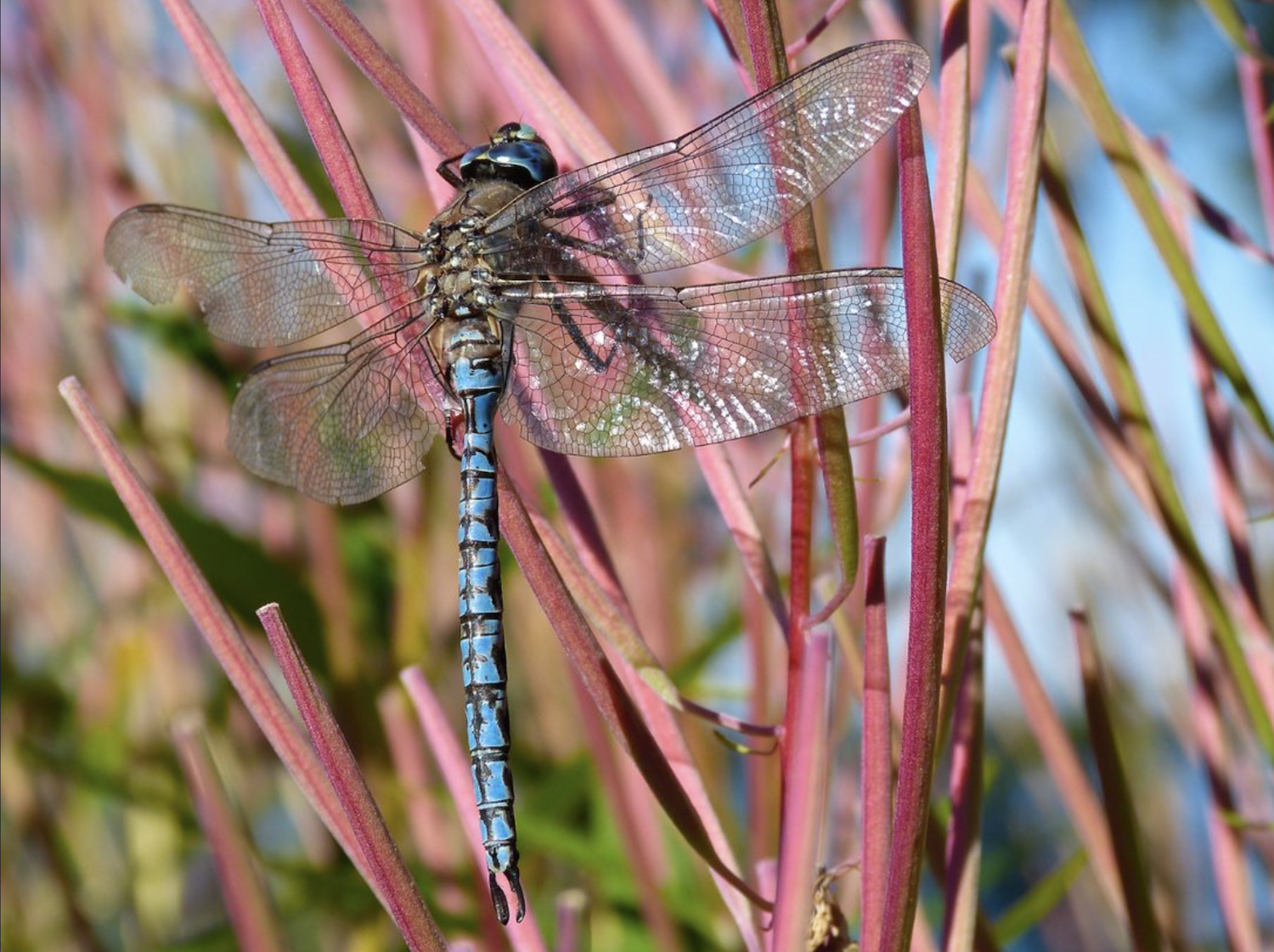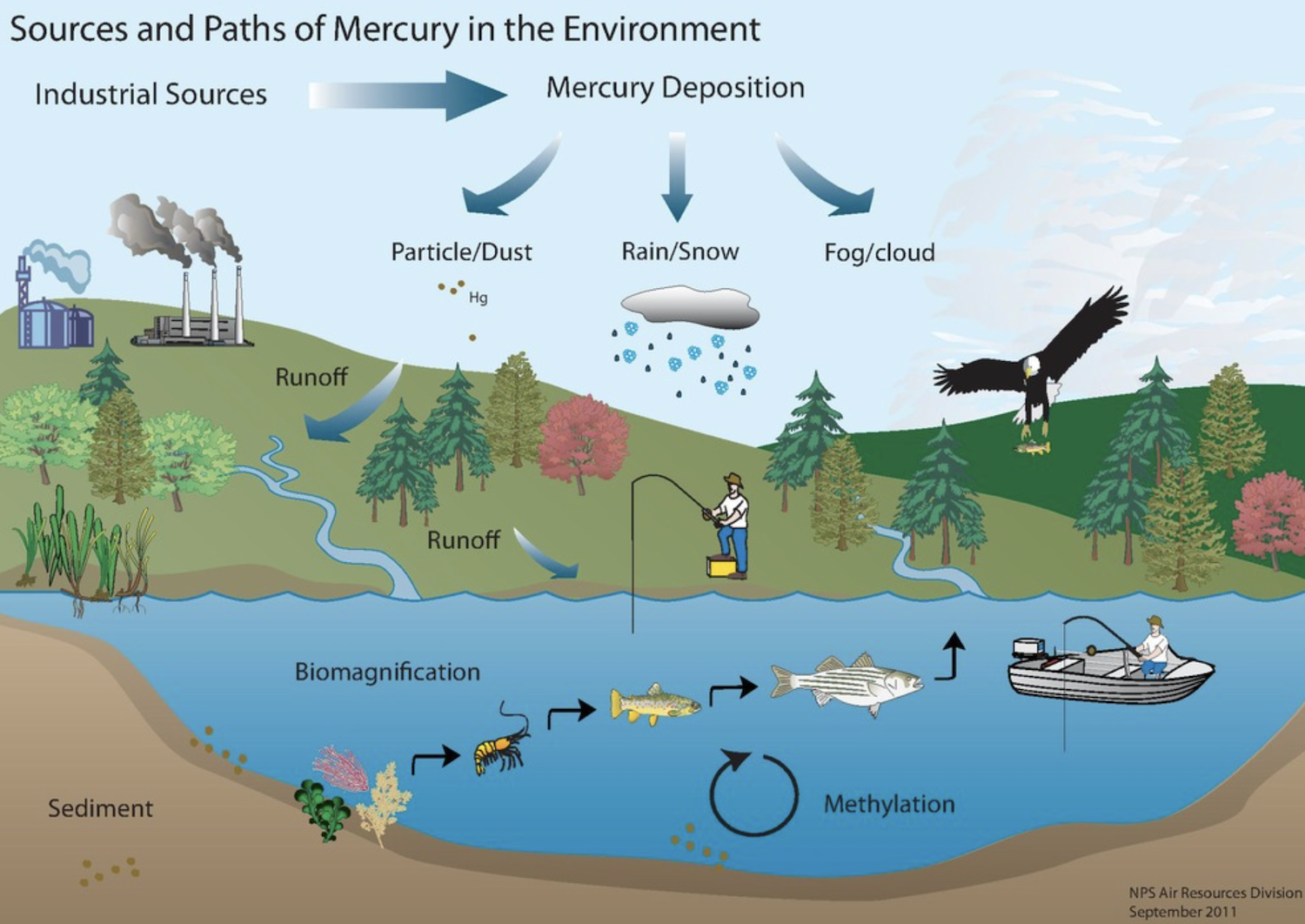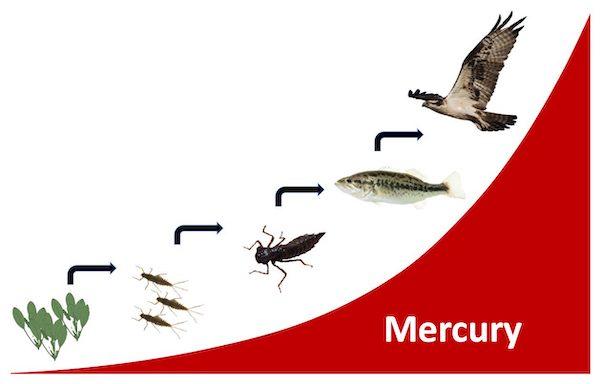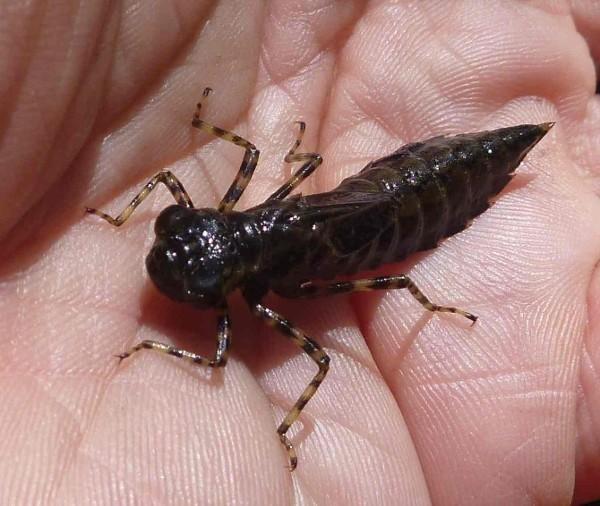
An adult Azure Darner dragonfly at Lake Clark National Park and Preserve. Citizen scientists across the country are at work on a project to measure mercury in dragonflies/NPS
Dragonflies: The Canaries For Mercury In National Parks
By Catherine Schmitt, Schoodic Institute
Editor's note: Back in 2009 the University of Maine and the Schoodic Institute at Acadia National Park started a citizen scientists project to sample national park dragonfly populations for mercury. Catherine Schmitt, the Schoodic Institute's science communications specialist, recently headed out on the road to join some of the teams collecting samples. This is what she found.
It was a warm, sunny day at Veterans Lake in Chickasaw National Recreation Area: butterflies fluttering, frogs hopping, and birds singing. I stepped to the edge of the lake, a long-handled net in my hand. I poked it into the algae-filled water, jabbing at plants rooted in the muck. I pulled the net up and peered inside.
Across the cove, two fishermen drifted by in an aluminum boat.
“I have to ask. What are you doing?”
“Looking for bugs,” I answered.
“That’s what I said!” said one to the other. “She’s doing some kind of study…”
The fishermen moved on, and I kept jabbing at the water.
I did not tell the fishermen that I was looking for bugs because of what they might reveal about mercury contamination in the lake, and whether or not the fish they were catching were safe to eat. Did they know that mercury is the cause of eighty percent of fish consumption advisories in the United States?

Sources and paths of mercury/NPS
People have increased the environmental presence of mercury, a volatile and toxic metal, by extracting it from the earth and releasing it to the air through (mostly) coal-burning, waste incineration, and gold mining. It falls back to land as rain, dust, and snow, and washes into lakes, streams, and wetlands, sometimes far away from the source. In aquatic settings, mercury works its way up the food chain, magnifying with each transfer from prey to predator, bug to fish, eventually reaching concentrations that harm wildlife and people. Mercury thus threatens places the National Park Service is charged with “preserving unimpaired.”
And it turns out that bugs, specifically dragonflies, are excellent indicators of mercury pollution. People are sometimes surprised to learn that dragonflies begin their life in water. Those flying jewels that have inspired culture and art for thousands of years are just the final adult stage that begins when an aquatic nymph casts off its skin, emerges into the air, and spreads its four wings to fly.
I didn’t find any dragonflies in Veterans Lake, so my traveling companion and I packed up the gear and drove into the historical district of mineral springs once known as Platt National Park.
True to its name, Rock Creek flows over stone and ledge through a wooded valley. Where the slender leaves of plants folded over into the water, I jabbed the net, sweeping the dangling leaves and roots along the rocky edge.
Success! Dragonfly larvae are relatively large, half an inch or so, and have a unique shape that once learned is easily recognizable. They are also abundant and live in all types of water bodies. I put the bug in a bucket of water from the stream and kept jabbing, sweeping, collecting, helping to tell a story about pollution in this park, and by relation all parks across the country that are part of the Dragonfly Mercury Project.

Mercury biomagnifies, or increases in concentrations with each successive step up the food chain/National Park Service
Started in 2009 by researchers at the University of Maine and Schoodic Institute at Acadia National Park, as well as Maine students and teachers, the Dragonfly Mercury Project has expanded to more than 450 sites in 100 National Park Service units and other public lands, engaging thousands of citizen scientists in collecting dragonfly larvae. Their data have allowed researchers to study how mercury moves through landscapes, and to develop an index of pollution risk. More than half of the sampled sites show levels of mercury known to cause “moderate” impairment, and twelve percent show high or severe risk of impairment.
Previous sampling at Chickasaw indicated moderate impairment: mercury concentrations in top predator fish may exceed the US EPA’s benchmark for protection of human health. The new samples would confirm, clarify, or complicate these results.
We spent a few days in Oklahoma City and then Austin, Texas, where I met up with Dragonfly Mercury Project participants and project coordinators from across the nation. I learned how much the project has resonated with youth especially, how dragonflies can connect people to their local rivers, reservoirs, lakes, and swamps.
We continued on to Louisiana. By the time we pulled into the canoe launch at Bayou des Familles in Jean Lafitte National Historical Park & Preserve, I was ready to receive the wisdom of wetlands.
This time, we had help, and it was a good thing, too, given the gators and snakes and poisonous creatures living in the cypress-lined canals. Gina Lloyd, citizen science coordinator with the Barataria Preserve section of the park, ran programs with youth and volunteers that involved dip-netting for aquatic invertebrates. Fresh from a master’s degree in integrative biology from the University of New Orleans, she was the ideal guide to the bayou ecosystem. We scooped up floating mats of vegetation and sifted through the clumps. Although she didn’t know much about dragonflies specifically, Gina easily re-focused while maintaining a running commentary on what we were pulling up in our nets: baby cricket frogs, newts, spiders, beetles, apple snails, and—most exciting of all—the world’s tiniest fern!

Dragonfly larva, family Aeshnidae, collected for the study from Olympic National Park/USGS
It was hard not to get distracted, but within an hour we had found enough dragonflies and began the sorting, identifying, bagging, labeling. I went back to the dock to collect water samples: two vials of filtered water for water chemistry analysis, so researchers could understand the context for mercury in the dragonflies, if there are other characteristics of the water that foster mercury accumulation. Then, a bottle of water for analysis of PFAS (per- and poly-fluoroalkyl substances), a new addition this year.
According to Colleen Flanagan Pritz, an ecologist with the National Park Service Air Resources Division, the Dragonfly Mercury Project has created a network of sites with both available samples and active participants. This network is now being leveraged as part of a national survey for these “forever chemicals” that are used in a diverse array of products and manufacturing processes.
“Concern about the exposure to and potential toxic effects of PFAS mixtures on ecosystems, and the services they provide to human communities, has been growing,” she said. “While there are localized, industrial sources of PFAS to waterways, PFAS can be atmospherically transported and travel long distances before depositing in parks.”
Previous data from dragonfly sampling at the Barataria Preserve showed mercury to be below levels of concern. It will be several months until the PFAS results are available, but I can’t help but be anxious, given the park’s location downwind of the densest concentration of petrochemical factories in the United States.
At the second site up the road, Gina quickly found dragonflies clinging to the roots of invasive water hyacinth. “I’m excited to try this with our high school students,” she said. “I think they would like this project, and the purpose it is serving.” With the dragonfly as a focus, students can confront pollution and all of its complexities while still getting outside and experiencing curiosity and wonder.
Back in New Orleans, where we were staying with a friend, we put the samples in the freezer and the next day on our way out of town we picked up ten pounds of dry ice to keep them frozen during their journey. Then it was straight to FedEx in Tupelo, Mississippi for shipping.
The next day, we had planned to collect dragonfly larvae along the Natchez Trace Parkway. But I had underestimated the time required (hours, days) and the added challenge of unfamiliar waters. Measuring and monitoring the health of parks takes a village – of scientists in the laboratory and at the computer, of friends with freezers, of shippers and delivery drivers, of volunteers jabbing nets into the muck, of dragonflies-turned-messengers.
We drove the parkway through the infinite greens of spring. We had missed the blooming of Dogwood Valley, but lots of wildflowers were on display: baneberry and wild geranium, crimson clover and scarlet catchfly. Water levels were low and we didn’t see any dragonflies, but I know they —and their messages— are there, beneath the surface.


Add comment